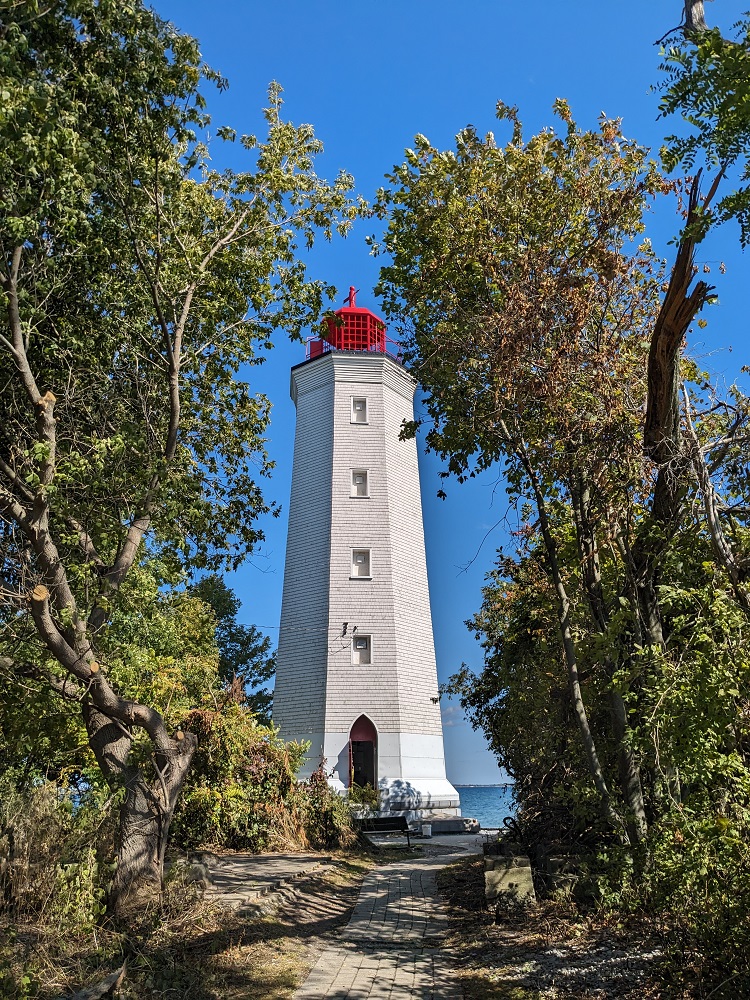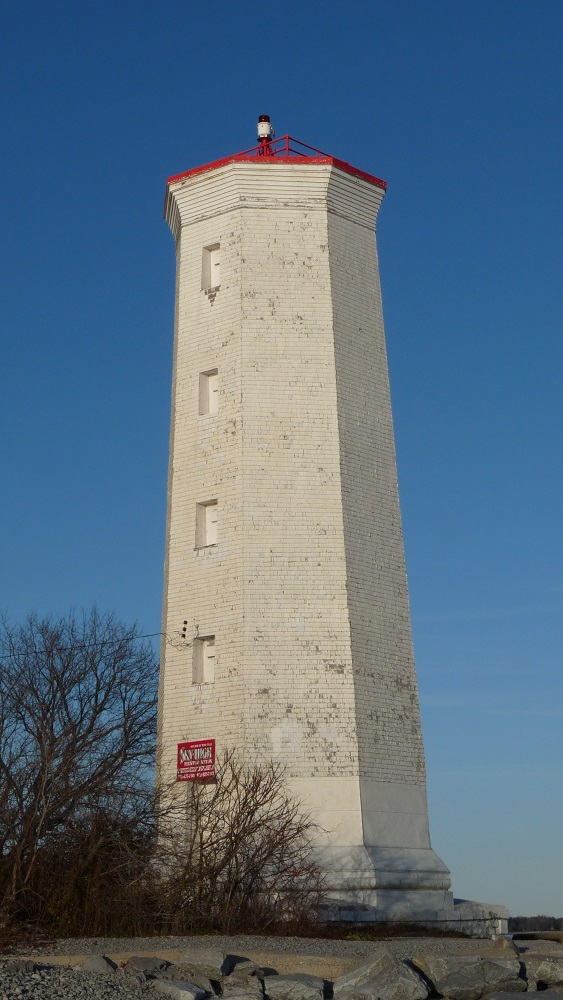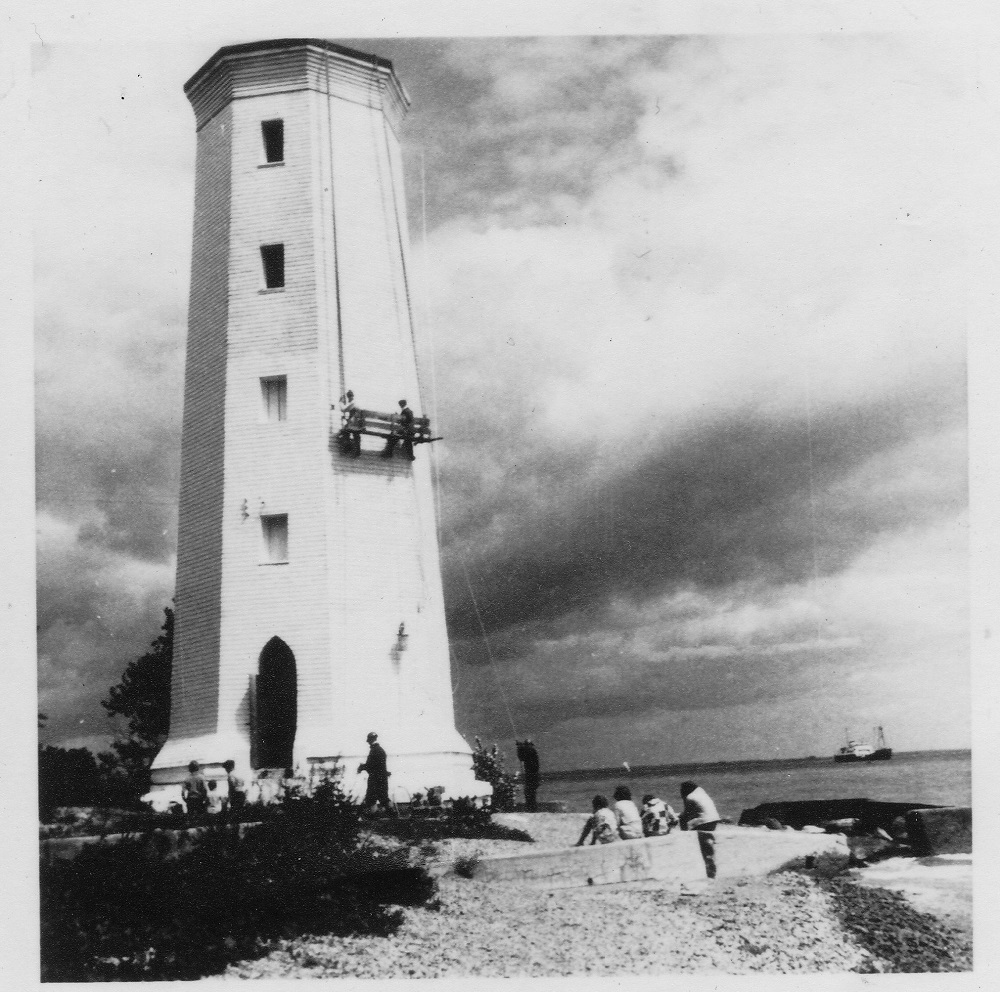If you’ve visited Presqu’ile Provincial Park, it is almost certain you have spent some time admiring their iconic Presqu’ile Point Lighthouse.
For over 180 years this lighthouse has remained a landmark in times of great change.
Although the Presqu’ile Point Lighthouse has remained a beacon along the north shore of Lake Ontario, it has had its own transformations and changes.
Today we’re highlighting the efforts that have taken place on Presqu’ile’s lighthouse to preserve and maintain this historic and functioning landmark – the second oldest continually operating lighthouse on Lake Ontario!
New changes

Before we step back in time, we want to start off by highlighting the most recent project that visitors will quickly notice.
Thanks to the great work and initiatives led by The Presqu’ile Point Lighthouse Preservation Society, a cupola was added onto the roof of the lighthouse in September of this year.
You might be wondering: what is a cupola, and why was this added to the lighthouse?
A cupola is a dome-shaped room that sits on top of a building.
When the Presqu’ile Point Lighthouse was constructed in 1840, it originally included a small structure with glass windows and a dome-shaped roof where the lantern was housed.

The original cupola and lantern were removed between 1952 and 1965 when they were replaced with a stationary red-light navigation beacon.
This present project brings back a character-defining element of the lighthouse.
The original structure
Presqu’ile Provincial Park is situated on a landform known as a tombolo. A tombolo is formed when an island is connected to the mainland by a sandbar.
This is how Presqu’ile got its name, which is French for “almost an island.”

This unique landscape jutting out into Lake Ontario made Presqu’ile an ideal place to build a lighthouse. Once operating, the Presqu’ile lighthouse was the first light an early mariner would encounter east of Toronto heading towards Kingston.
An engineer named Nicol Hugh Baird was hired to design and oversee construction of the lighthouse, beginning in 1837 and completed in 1840.
His plans called for a 69 ft. high octagonal stone tower with a base 8 ft. high and 30 sq. ft. It was decided that the lighthouse should be built on the eastern point of the peninsula, known then as Gibson’s Point (named after an early settler at Presqu’ile).
The lighthouse originally had a whitewashed limestone exterior made from locally sourced stone. Unfortunately because the lighthouse was built right on the point, it was subject to damage year-round from wind, rain, and frost.
Storms bring change

The lighthouse saw its first transformation in 1894 due to weather-related damage.
At this time the exterior of the lighthouse was covered with a wooden girdle and cedar shingles to help prevent further deterioration of the structure.
It was said that inadequate stone and poor workmanship were to blame and the reason why the structure had to be covered with shingles.
These cedar shingles were painted white to make the lighthouse more visible to ships.
During the 1800s, shipping was an integral form of transportation and lighthouses were the only navigation aids, making this work to preserve the structure a critical task.
The light
Originally lit by an oil lantern and a series of reflectors, keeping the lights on at Presqu’ile Point was an around-the-clock, strenuous task. The lighthouse keeper would have to carry jugs of oil up the 80 steps to the cupola, sometimes multiple times a day!

The 1860s brought a positive change for the lighthouse, the source of fuel for the lantern changed to kerosene, or “coal oil.” This was very exciting for the lighthouse keeper as kerosene was said to burn brighter and better than the previous fuel sources they used.
Things steadily improved for the lighthouse keeper, especially with the conversion to electricity in 1935. For almost 20 more years the lighthouse used a fixed white light.
In 1952, the light was changed to a fixed red colour and was converted to automatic operation, ending the need for a lighthouse keeper, although there was still a general caretaker until 1965.
By 1965 the cupola was removed and the beacon light we see today had been installed.

The colour reflects change since red has a shorter range for people to see in comparison to white light. With the red light, the range had been reduced to eight miles, which classified it as a large harbor light.
This is in keeping with its reduced role as a guide for pleasure crafts.
Preservation in the modern day
The cedar shingles that were added in 1894 did an excellent job preserving the lighthouse for over 120 years!
Fast forward to 2017, the lighthouse needed some TLC and preparation work was beginning for a large maintenance project led by The Presqu’ile Point Lighthouse Preservation Society (PPLPS).

The PPLPS is a non-profit organization that was created in 2012 to repair and refurbish the Presqu’ile Point Lighthouse.
In October 2017, scaffolding was installed surrounding the lighthouse so engineers could safely investigate the structure of the lighthouse underneath the shingles.
From September to October 2018, the new shingles were installed. The scaffolding was removed in November, unveiling beautiful new shingles that we hope can last another 100 years.
Within the following year, more projects took place including repainting the iconic red roof, installing new metal paneling along the bottom of the lighthouse, rebricking the pathway leading to the lighthouse, and giving the door to the lighthouse a fresh coat of vibrant red paint.
A BIG thank you!
For nearly 200 years the area now known as Presqu’ile Provincial Park and the Presqu’ile Point Lighthouse have captured the hearts of local residents and visitors from near and far.

Thanks to the passion, dedication, and efforts from many, including our friends at PPLPS and Ontario Parks staff, the Presqu’ile Point Lighthouse is beautifully preserved with plenty of historic character for all to enjoy for years to come.
The history of Presqu’ile Provincial Park and the Presqu’ile Point Lighthouse is vast and fascinating!
Visitors to the park can learn more about the lighthouse by visiting the Lighthouse Interpretive Centre throughout the summer months.
There you can discover the stories of the area through fun, informative exhibits.
